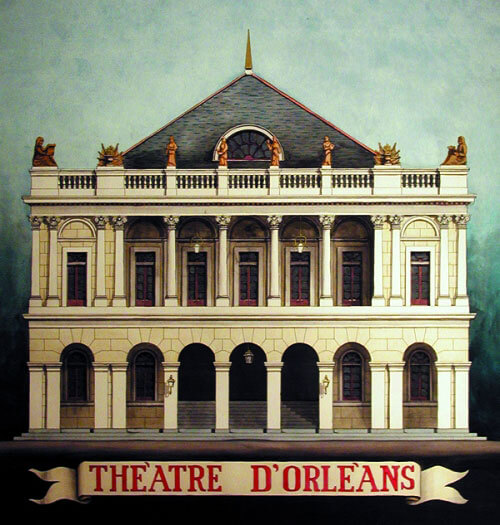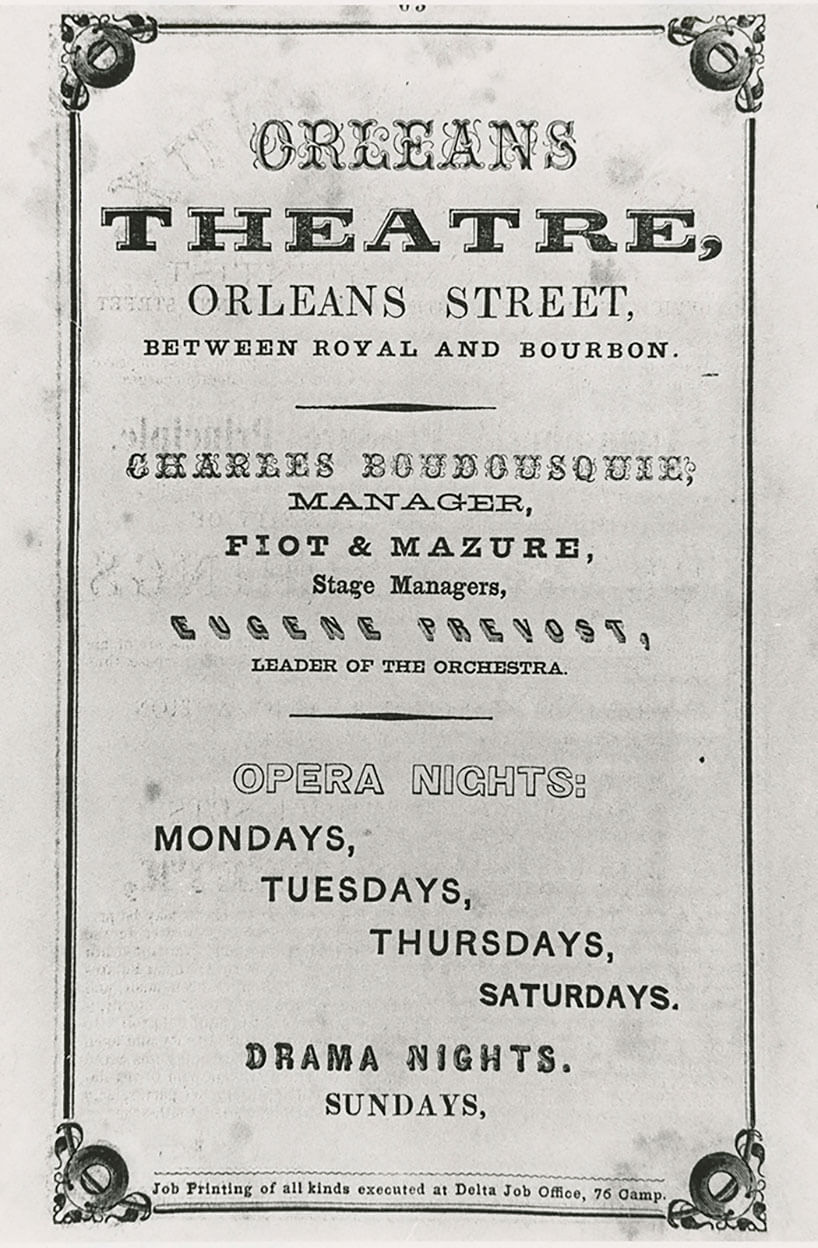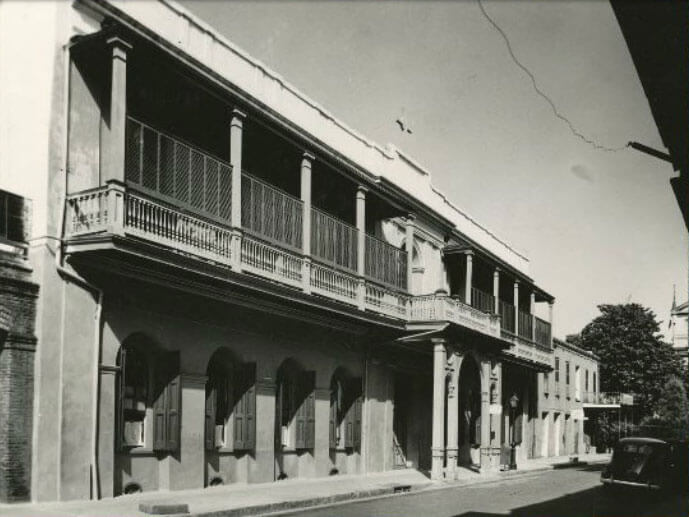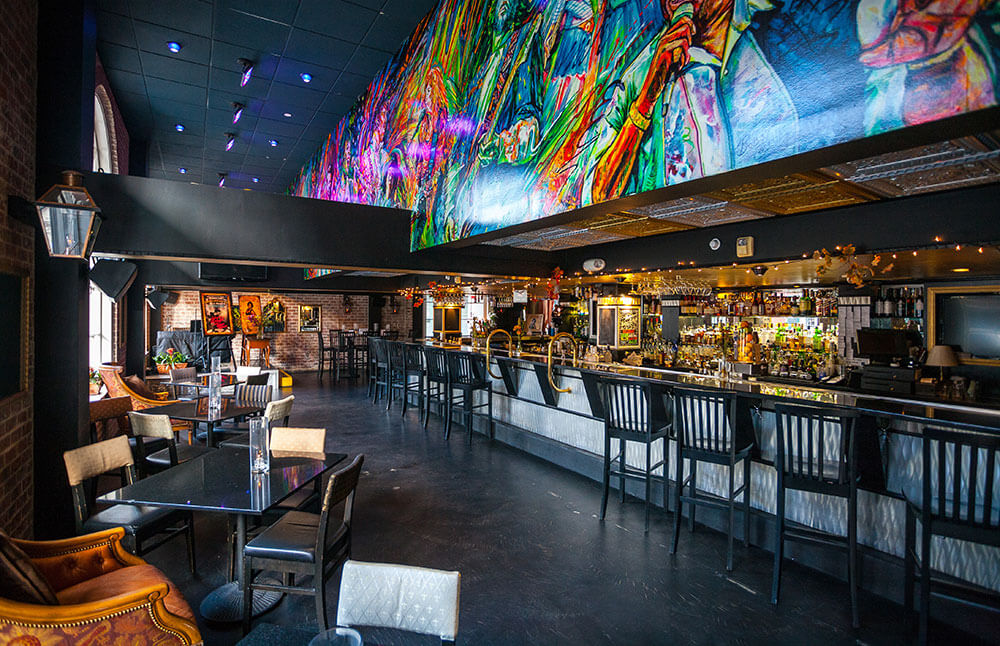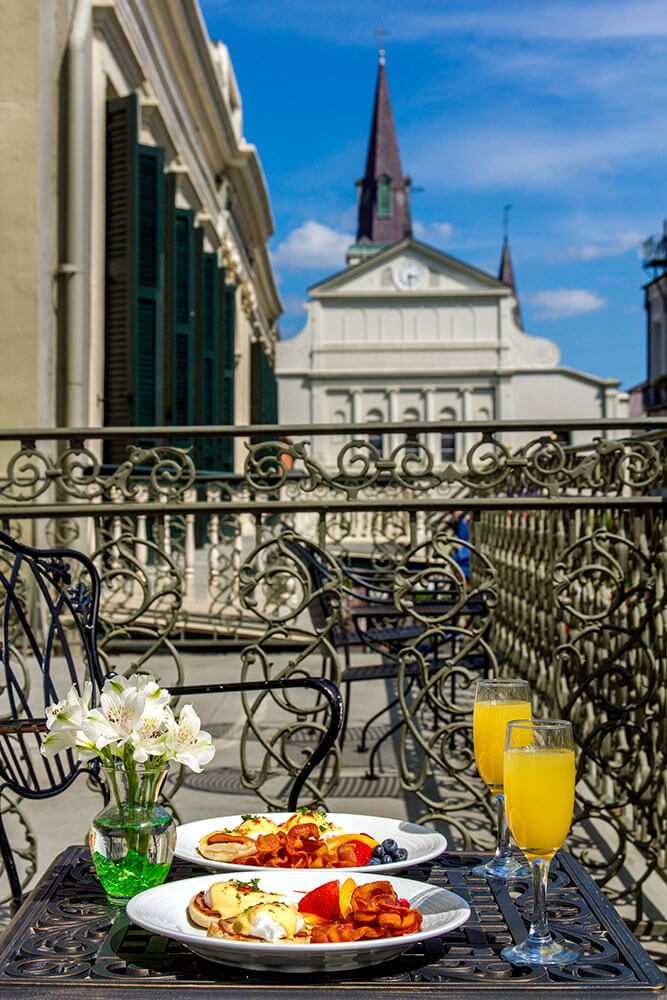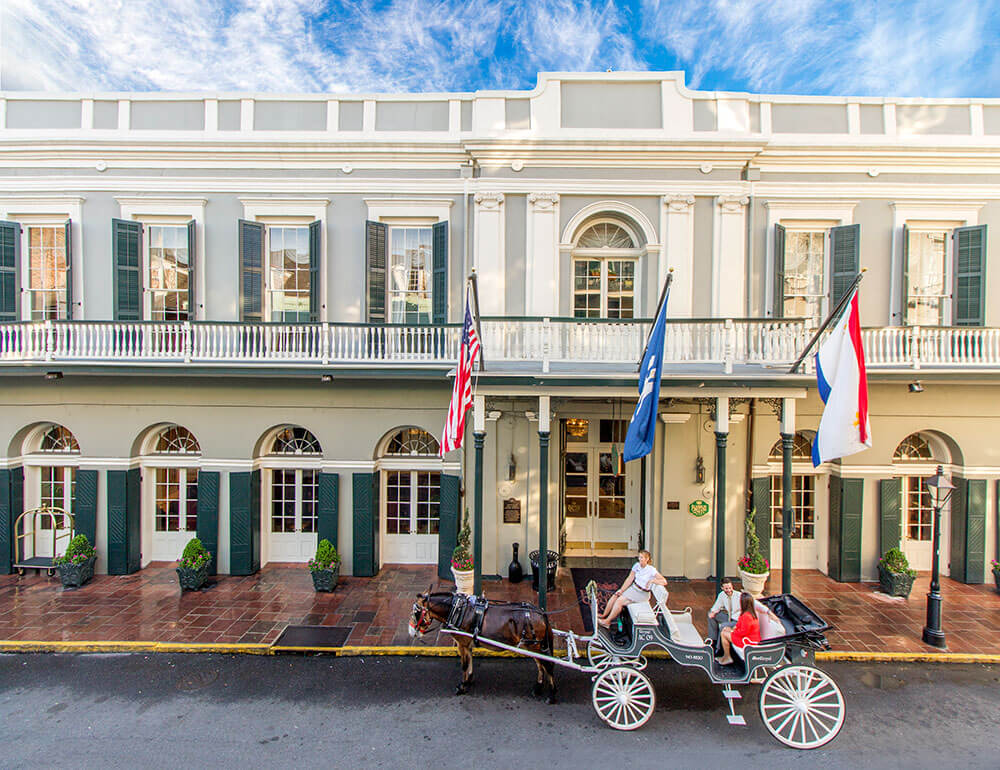
Over the decades, the Bourbon Orleans Hotel has been an entertainment complex, an orphanage, and a convent. (J. Stephen Young)
Many event venues started their lives as completely different entities. This story kicks off a new Convene series about the colorful histories of modern meeting spaces.
While the Bourbon Orleans Hotel’s Bourbon “O” Bar serves drinks of all sorts, the hotel itself is known for another kind of spirits — thanks to its past lives. The New Orleans hotel hosts as many as 17 ghosts, according to Haunted Rooms America, which keeps track of such things.
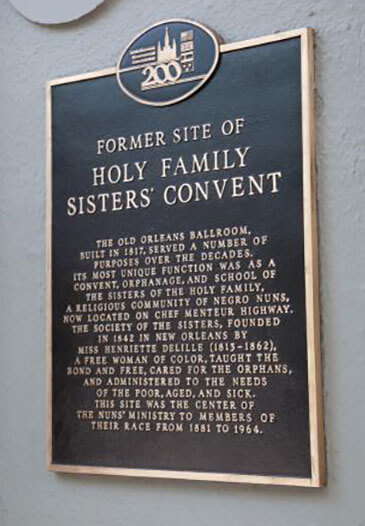
The Bourbon Orleans Hotel celebrates its past with this plaque explaining it was once a convent for the Sisters of the Holy Family. (Courtesy Bourbon Orleans Hotel)
The hotel itself claims to house the ghosts of a Confederate soldier, various nuns and children, and a lonely ghost dancer in its famous ballroom. It offers its own haunted tour every Thursday evening. Grayline Tours features the property in its Ghosts & Spirits Walking Tour.
Whether or not you believe in ghosts, the Bourbon Orleans Hotel’s history will nonetheless draw you in.
Built as a theater and eventual entertainment and meeting complex, the hotel spent much of its 202 years as a convent and orphanage before being reborn once again as it is today — an opulent hotel and meeting venue in the heart of the French Quarter.
Now managed by The New Orleans Hotel Collection, the Bourbon Orleans Hotel features guest rooms and balcony suites with views of the French Quarter, a bar and restaurant on site, and plenty of options for events, from salons accommodating from 70 to 130 people to a ballroom for 300.
It all started in 1815, when entrepreneur John Davis built the Théâtre d’Orléans. That building burned to the ground just two years later, but Davis’s idea for a premiere theater took off after he rebuilt in 1817. After early success with the theater, he added a grand ballroom, called the Salle d’Orléans. The complex quickly began hosting elite New Orleans affairs, including masquerade and carnival balls. It also hosted infamous balls at which wealthy French men living in the U.S. would find mistresses of mixed heritage. Davis introduced French opera to America at the theater, and through the years, he added dining and gambling rooms to his entertainment complex.
Louisiana’s state and house legislators began meeting in the ballroom in 1827. And although it isn’t verified, some claim Andrew Jackson announced his candidacy for president there.
The Civil War put an end to New Orleans’ exciting nightlife, and by 1881 Davis had moved on and both the Orleans Theatre and ballroom had been acquired by the Sisters of the Holy Family for use as a school and convent.
The first and oldest female-led, African-American order in America, the Sisters of the Holy Family was founded in the early 1840s by a group of women whose leader, Henriette DeLille, refused to attend the mistress-making balls held at the Orleans Ballroom. The order cared for those on the bottom rung of antebellum society. Shortly after they bought Davis’s properties, the Sisters built an orphanage and public chapel on the land. They also founded the first Catholic secondary school for African-American girls in New Orleans, called St. Mary’s Academy, on the property.
The Sisters used the property for 83 years, through yellow fever epidemics, race problems, and other travails, before outgrowing the complex in the 1960s. In 1964, construction began on the Bourbon Orleans Hotel. While the crumbling walls of the nuns’ school came down, the original ballroom was preserved and refurbished. Updated and restored, it remains in use. The hotel claims it is one of the most coveted event venues in New Orleans, hosting weddings, receptions, dinners, and meetings.
The Bourbon Orleans Hotel, at 717 N. Orleans St., is located near two city landmarks — the St. Louis Cathedral and Jackson Square. The nightlife on Bourbon Street is just half a block away, and the restaurants, art galleries, antique shops, and boutiques are nearby on Royal Street.
Bourbon Orleans Hotel — Past and Present
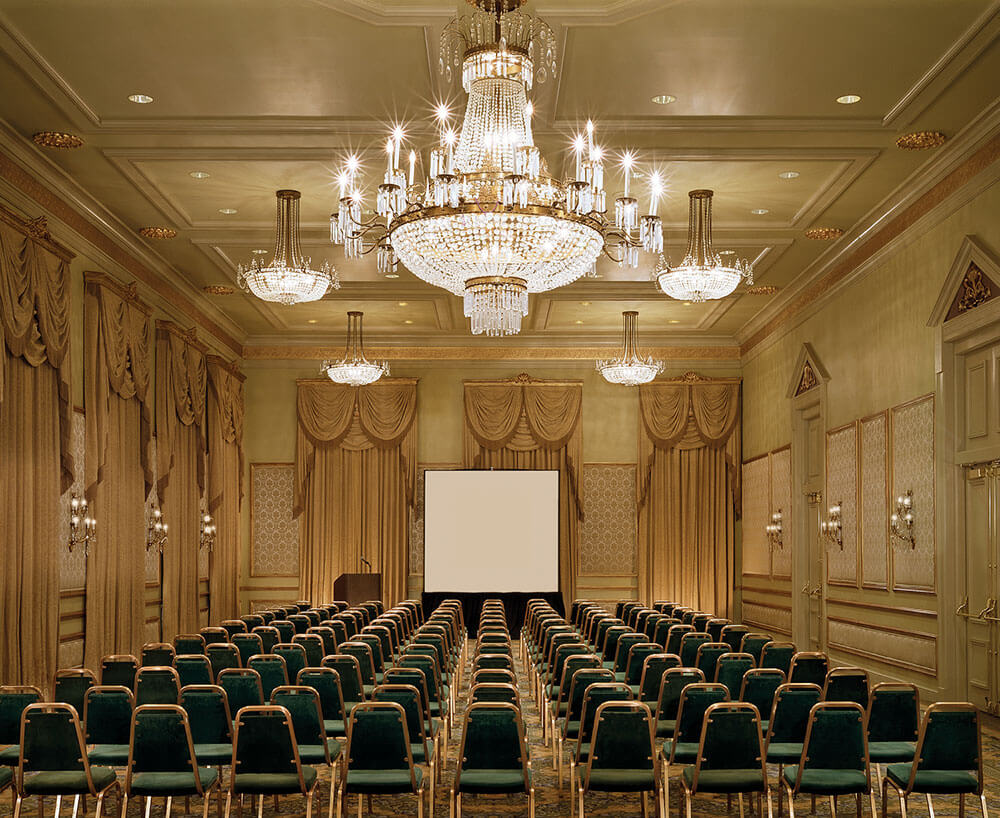
The ballroom of Bourbon Orleans Hotel is an original space from when the building was erected in the 1800s. (Courtesy Bourbon Orleans)
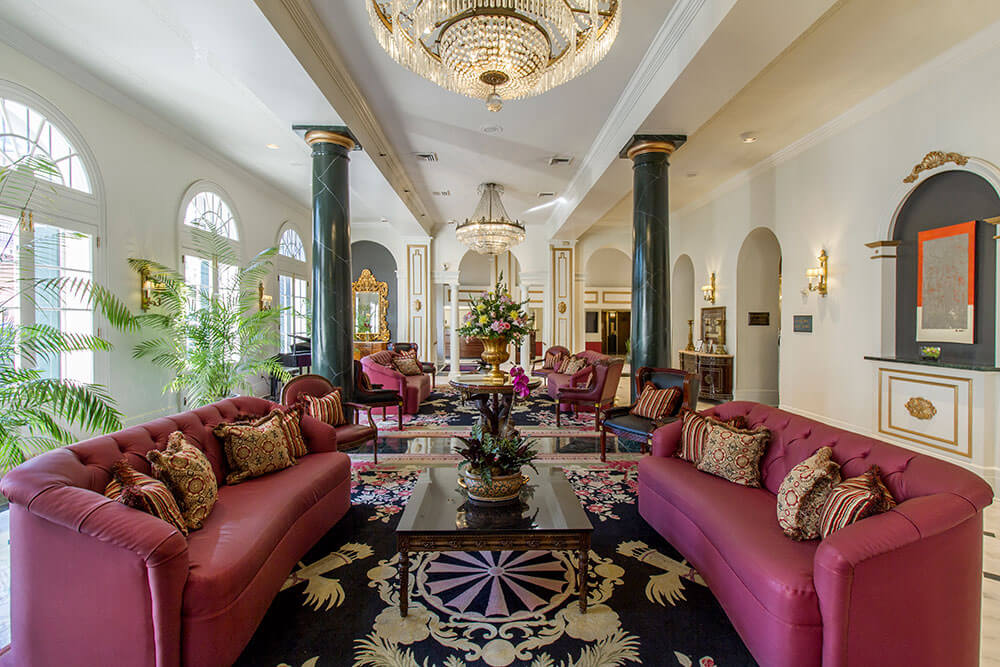
Windows of the Bourbon Orleans Hotel's grand lobby face Orleans Street, where the building has existed since 1817. (J. Stephen Young)
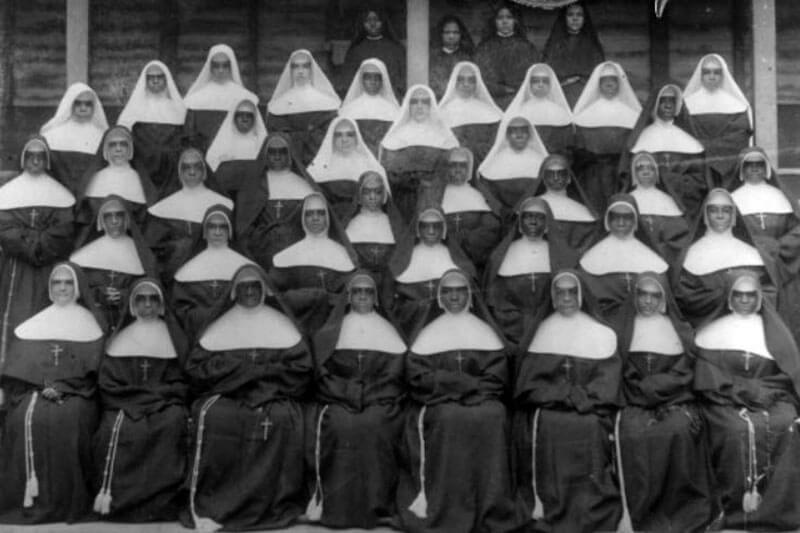
The Sisters of the Holy Family order gather for a photo on the patio of the convent on Orleans Street, now the Bourbon Orleans Hotel.
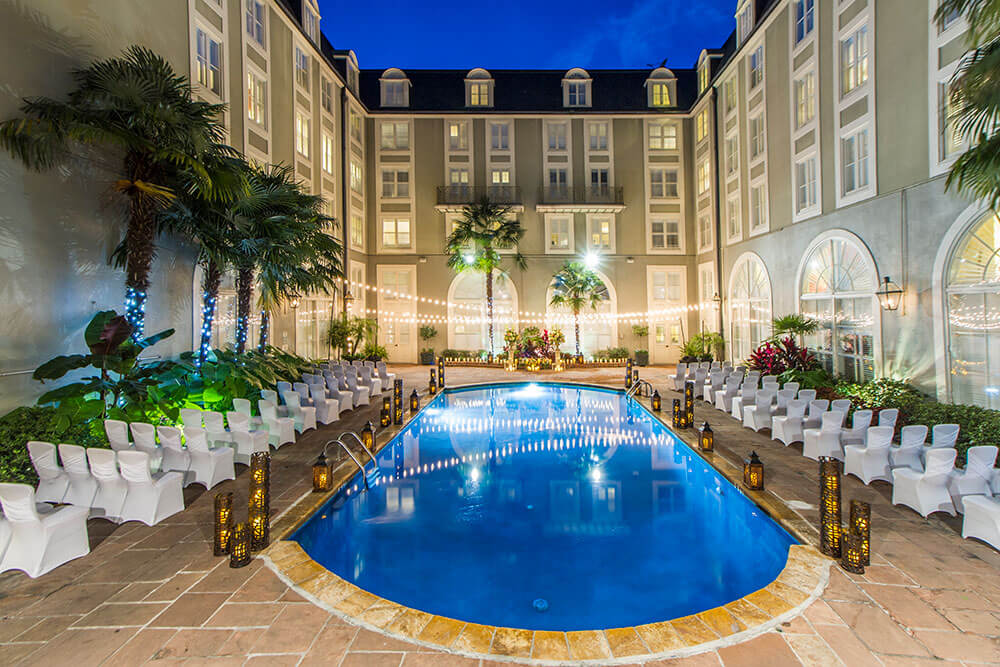
The pool in the courtyard of the Bourbon Orleans Hotel can be used for special events. (J. Stephen Young)
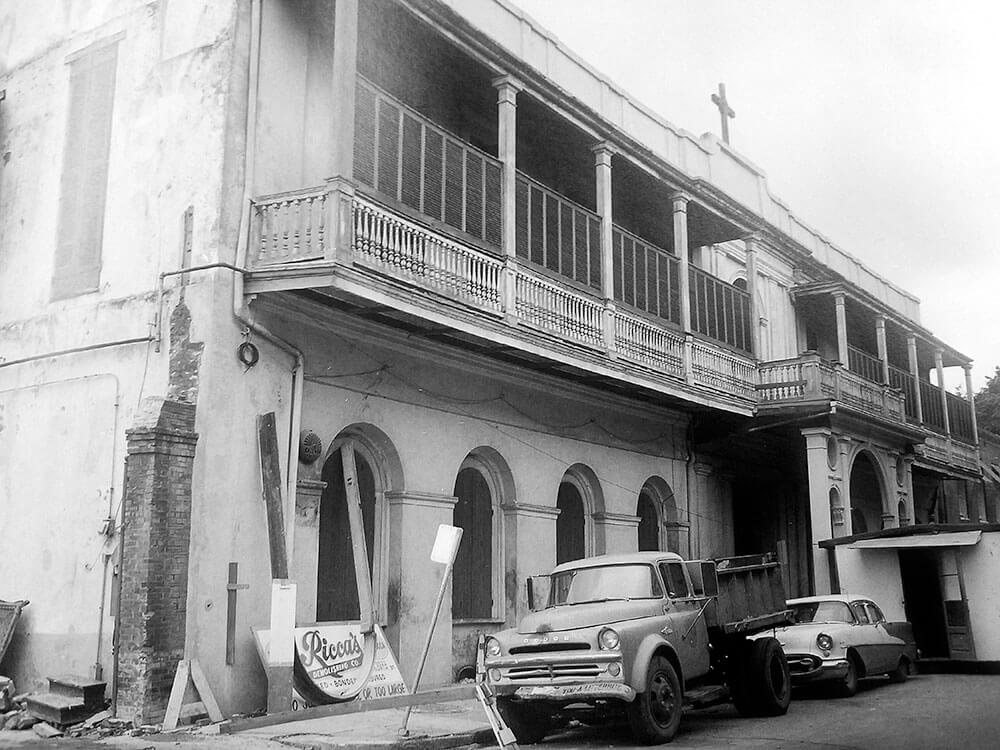
A cross stands atop the former orphanage in 1964, when the building was almost 150 years old. By that time the building was being renovated as the Bourbon Orleans Hotel.

